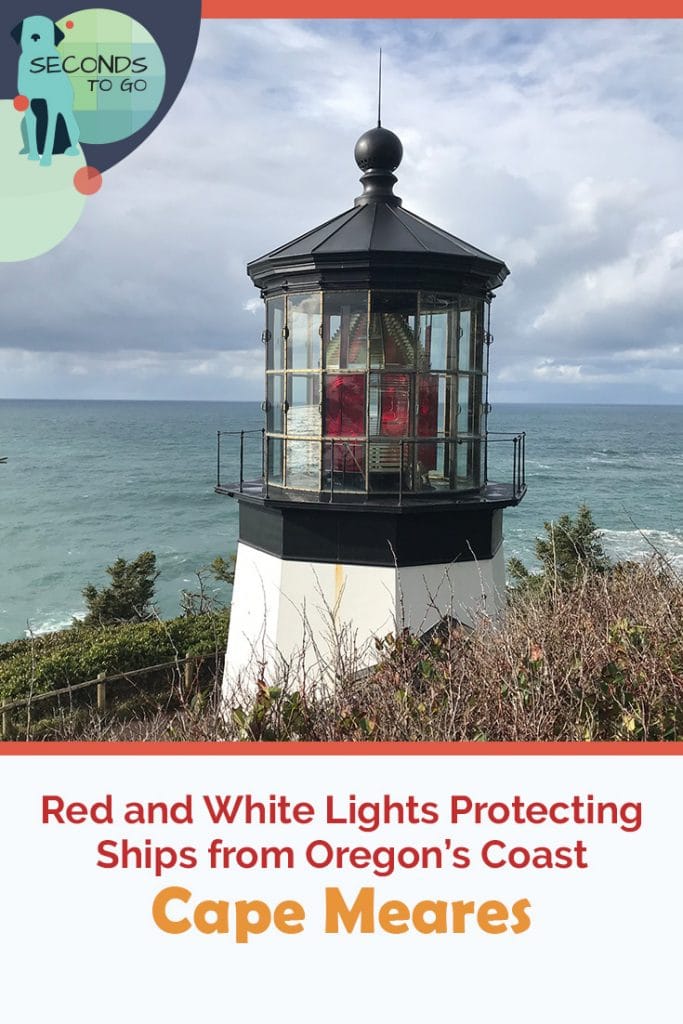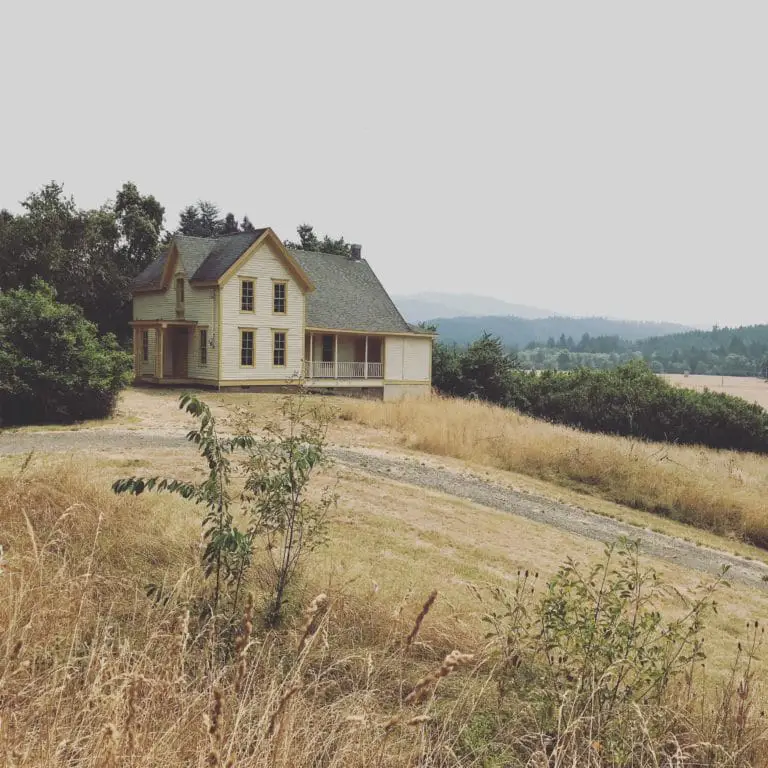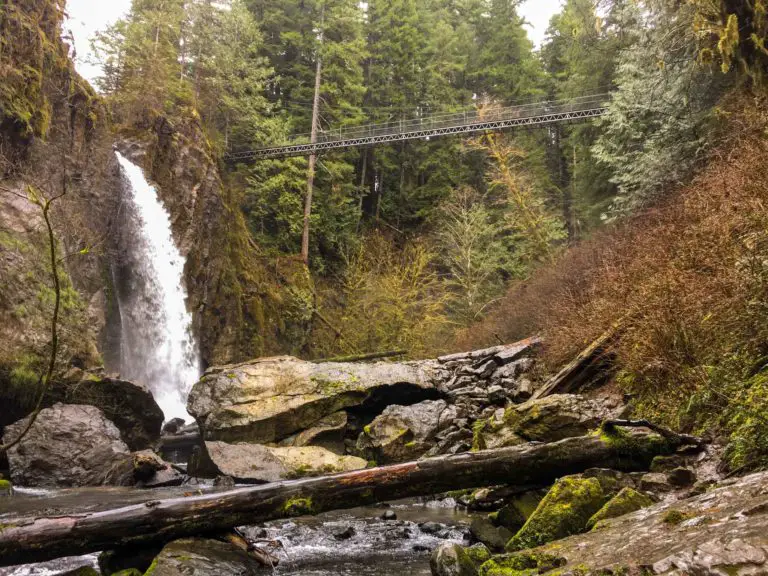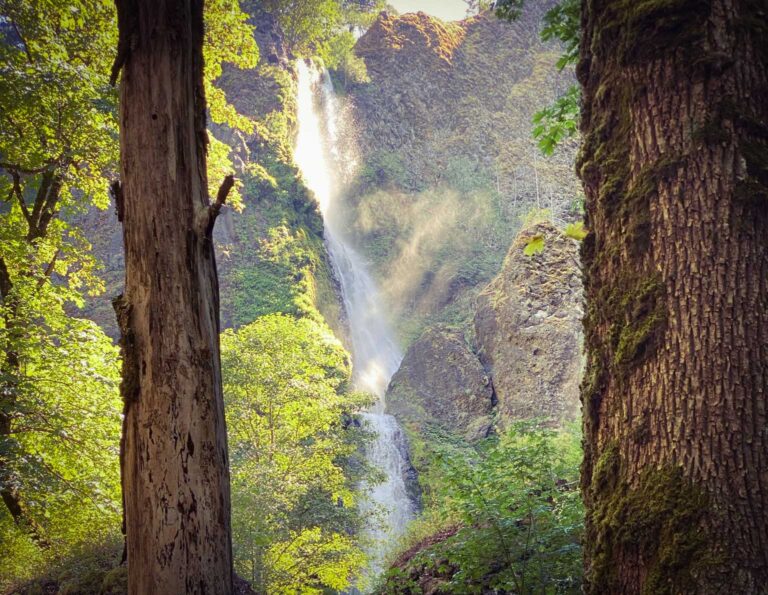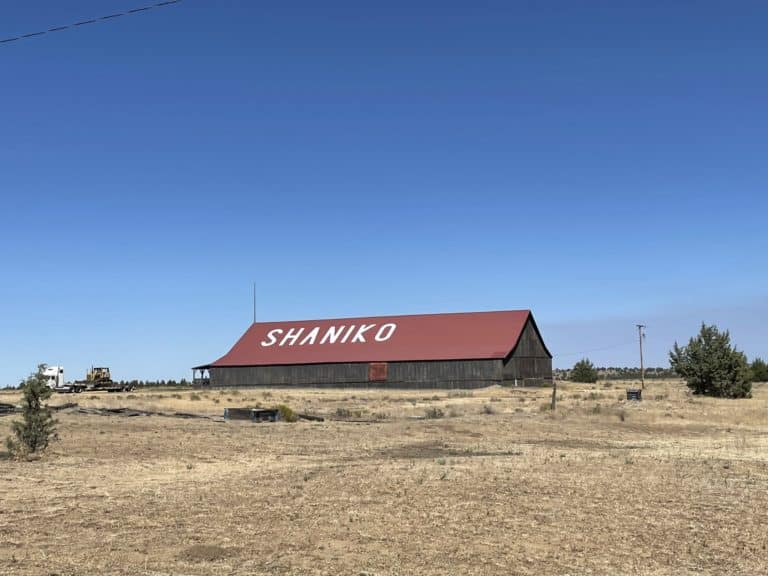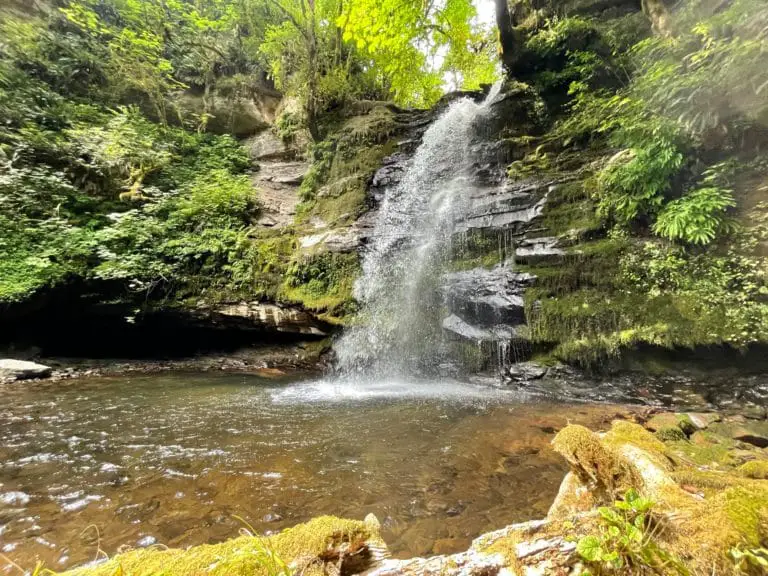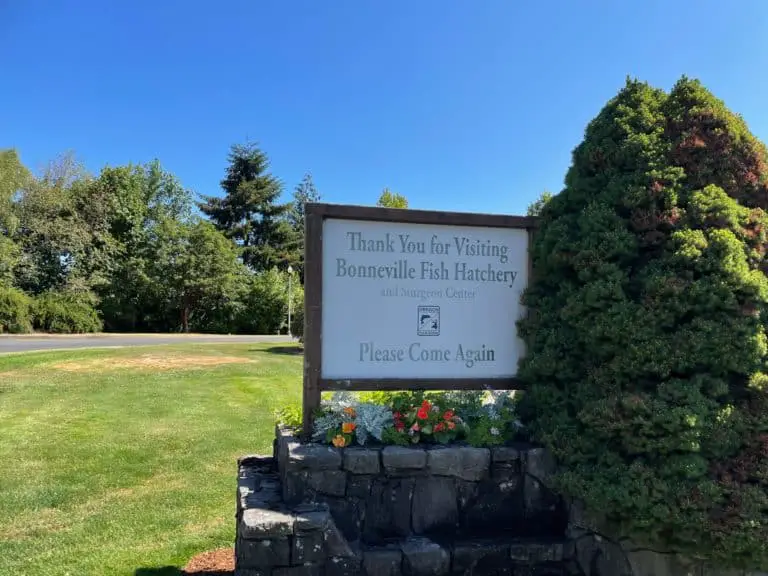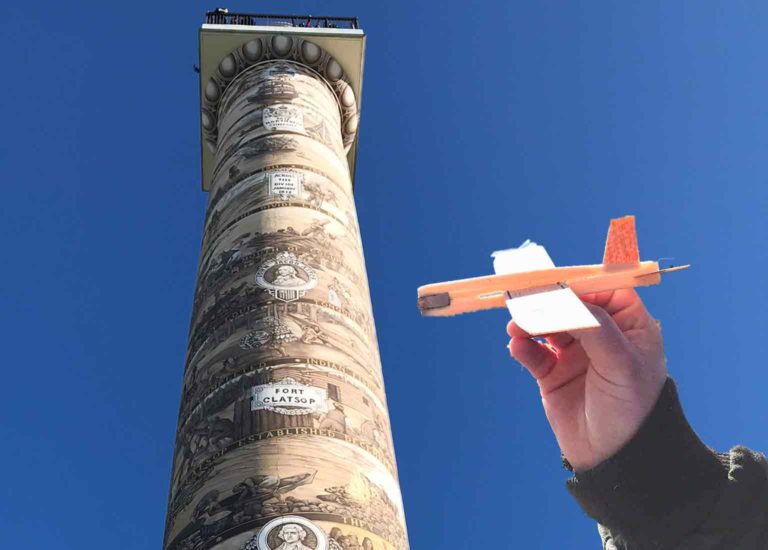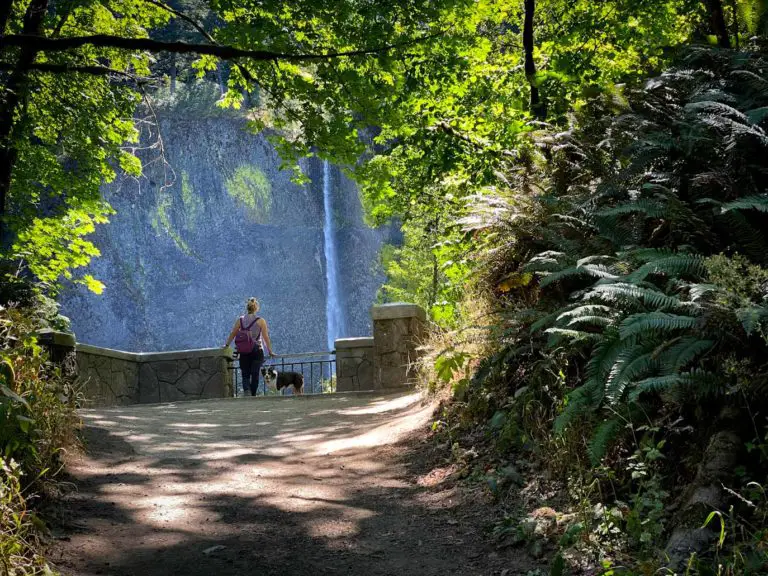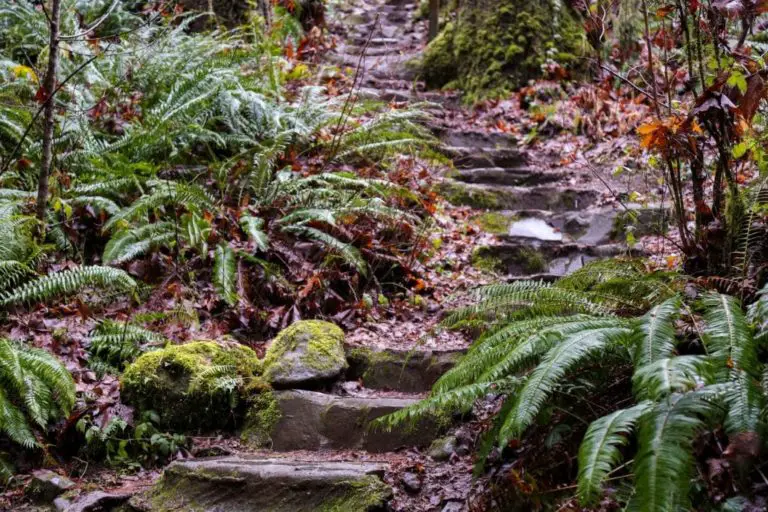Outside Astoria, Oregon sits a crucial part of both Civil war and WWII history. Fort Stevens State Park is the site of decades of Oregon battle time defense, protecting the crucial Columbia River waterway. Today, many of the structures still stand, abandoned but not forgotten.
Table of Contents
Descending upon Fort Stevens State Park Oregon
On a foggy, cold morning in Astoria, Oregon, we descended upon the remains of Fort Stevens. Ideally, we should have had sunshine. It was shining full and steady for the first time in days as we left Seaside. Here, however, we were battered with the cold wind.
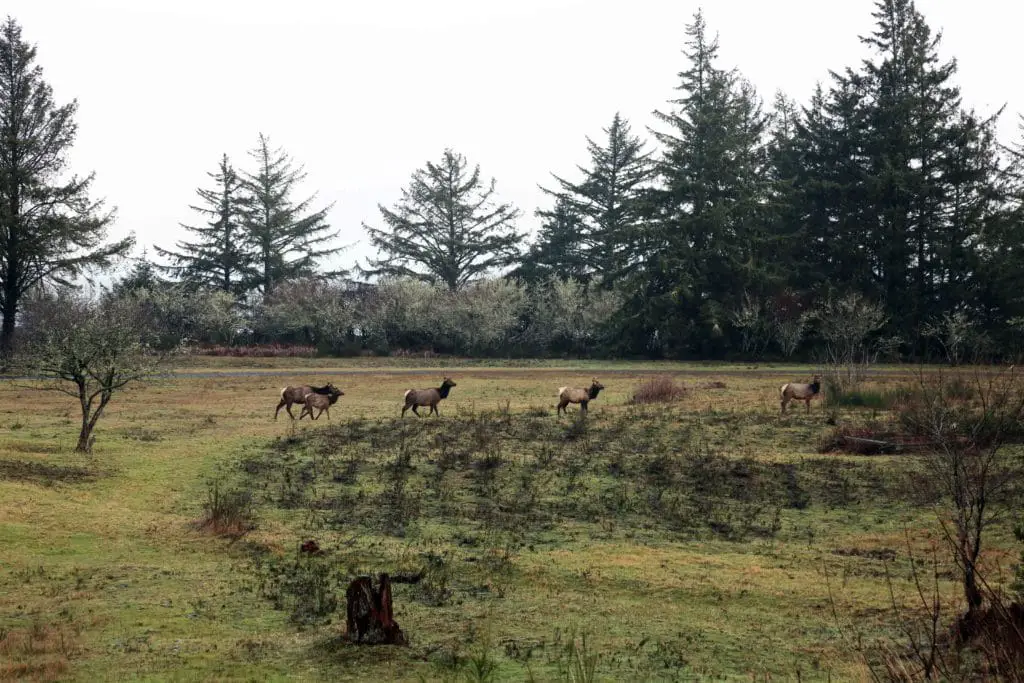
It isn’t that uncommon on the Oregon coast, so we didn’t let it deter us from heading through the entrance gate into Fort Stevens State Park in Oregon—unmanned on a Sunday morning in February—and into the silence of the remains.
We drove toward the main building in foggy light, passing foundations in rigid formation to our left, as well as some cannons and a large mound of dirt on the right. Later we would learn that the foundation remnants belonged to the barracks used during the second World War.
After stepping out of the warm car into the wind, we noticed a couple of young elk bulls in the parking lot. We excitedly inched closer to get photos and quickly realized we were practically in the middle of a large elk herd. They were grazing and playing against the backdrop of the old Fort Stevens remains.
We were parked near the museum at Fort Stevens State Park Oregon, thinking to start there, but quickly found the building closed and locked. Fortunately, since it was still a couple of hours before the museum building opened that Sunday, we were able to enjoy being the only people in the park.
As we headed deeper into the area behind the building, the elk began to distance themselves. Between our group and the dog, it’s not surprising they wanted some space. In our excitement at discovering so many well-preserved
remnants of Oregon history, we were pretty loud!
The Batteries at Fort Stevens State Park
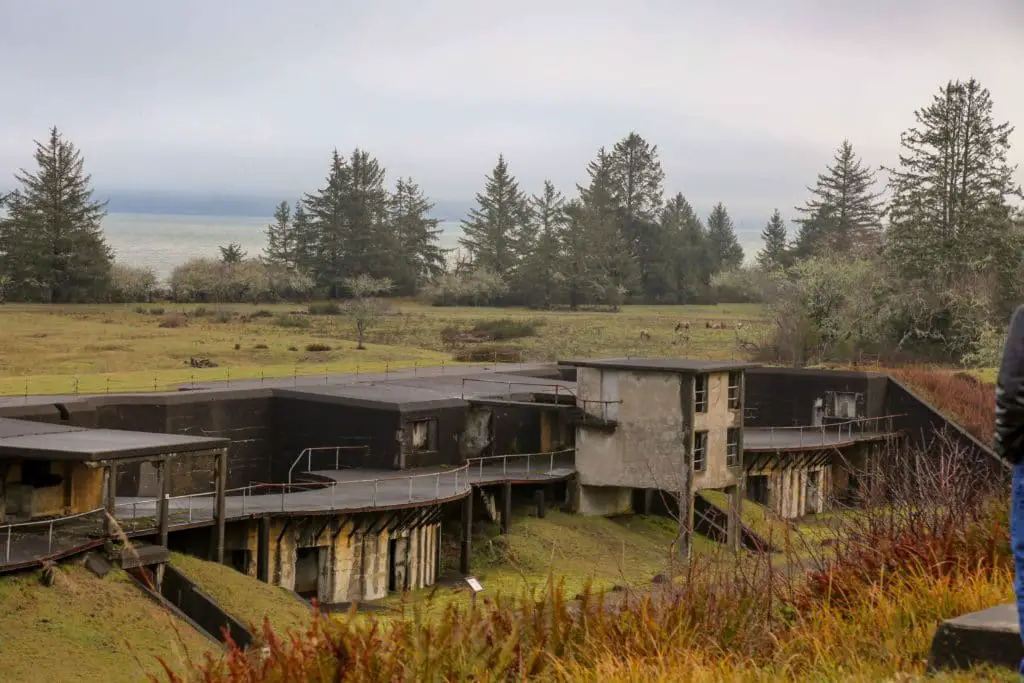
The first thing we came upon was a concrete structure with stairs and ladders. After climbing up on Battery Pratt, we could clearly see this was where a cannon of sorts was mounted, aimed at the river. On one half, a cannon was still on display. At the top, we had a great view of the water as well as the large elk herd.
Below, where the cannons were mounted, we found empty rooms. Tracks on the ceiling led us to believe that this is where ammunition was stored. We’d seen similar things in other abandoned forts, such as Fort Wetherill in Rhode Island. We speculated that the tracks made it possible to move munitions between the underground storage sheds and the guns mounted on the top.
In line with this structure, were similar buildings. These had roof-like attachments and a building on top. This area, called the West Battery, was blocked off and in a little bit of disrepair.
During war times, the Pratt Battery of Fort Stevens held 2 six-inch rifles while the West battery housed four 10” “disappearing guns.” I am just hypothesizing here, but I believe the roof structures on this battery that are absent on the other, are for the disappearing act of the guns

At the top of Fort Stevens State Park Oregon
After trying our best to get glimpses inside the roped off battery, the men in the group couldn’t contain their excitement, and they split up, each taking a different set of stairs. THe different sets of concrete staircases ended at the top of the large dirt mound with the stairs on the right leading to Battery 245, which is smaller, but newer than Fort Stevens’ other batteries.
Here, we found small concrete structures that were partially underground, with doors allowing entrance into the back of them. According to the map from the museum, this area housed the commander station and the mine
observation station. I highly recommend going inside these structures and gazing over the river. It will give you an idea of how difficult it would have been to see oncoming enemy ships from Fort Stevens.
The stairs we climbed to get up to the observation structures seemed much less steep on the way up. So, we carefully made our way back down them to the batteries again. On the right heading back to the museum
we stumbled across a yellow building labeled Steam Plant. The plant is left as it was when it fell into disuse in 1920. Prior to this, it was used to power the West Battery.
The Founding of Fort Stevens
We may have gone about our self-guided Fort Stevens tour a little bit backwards. It makes more logical sense to start with the older fort portions at the front of the park and work your way back, but we let the elk be our initial tour guides. Going backwards in time, the original Oregon civil-war fort is seen off to the right as you drive in towards the museum and parking area.
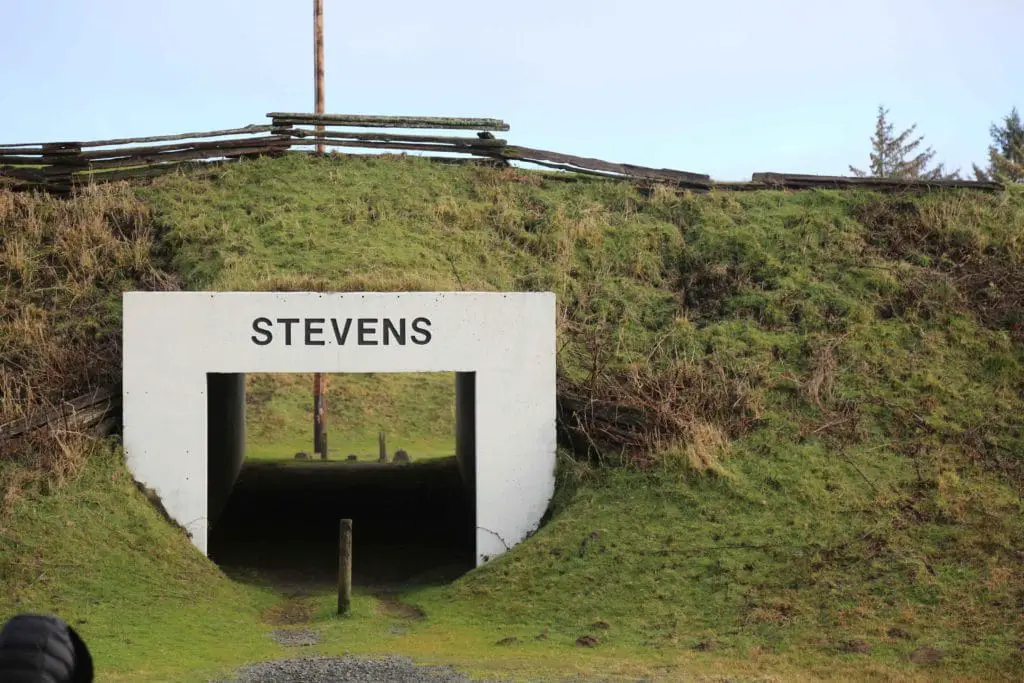
The large mound of dirt we had viewed when entering the Fort Stevens State Park Oregon actually forms the embankment defense of the old civil war outpost. You can clearly see the moat and the earthwork that provided the defense of Fort Stevens in the civil war era. We climbed to the top of the dirt to see the river while the dog ran full speed up and down the man-made hill. The current earthwork is a reconstruction of the original built in 1864.
On the right side of the earthwork part of Fort Stevens, is the Mine Casemate and Mine Commander’s Station. This building seems a little more abandoned than most at this site, but you can go inside.
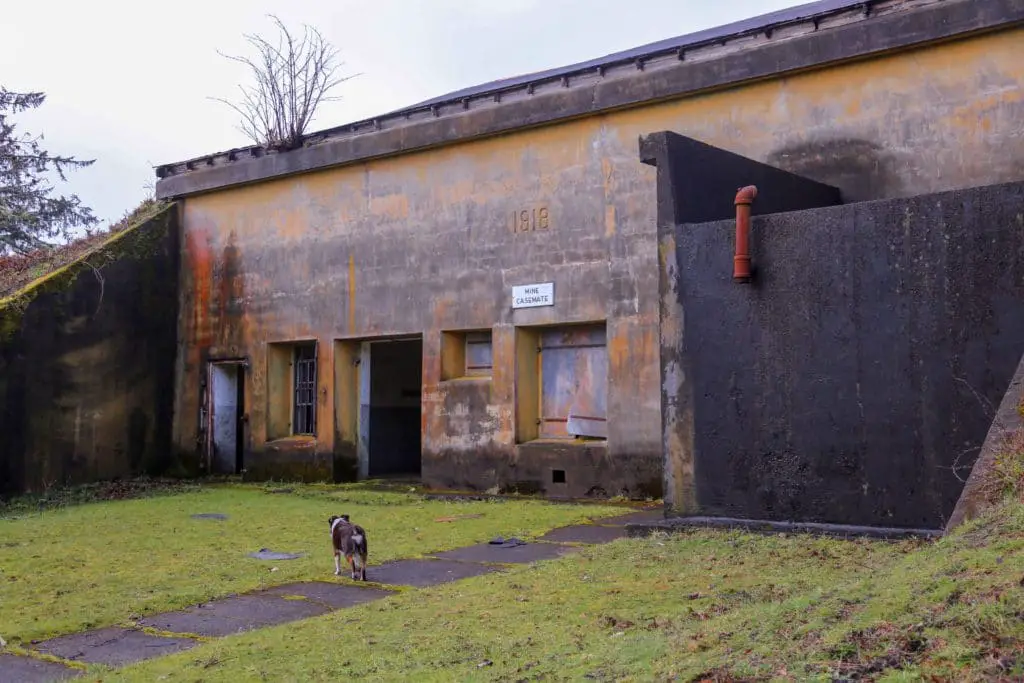
For photographers, it has great color to it, with yellows and orange streaking down the building in contrast to the green earth around it. Inside, there is not much left to see, except an old electrical panel.
Gymnasiums, Hospitals, and Bakeries- the Other Buildings of Fort Stevens State Park Oregon
On our way out, we deiced to do one last drive around the property and came upon a lot of seemingly random structures and foundations. This is when I realized just how many people were stationed here, and how large Fort Stevens was.
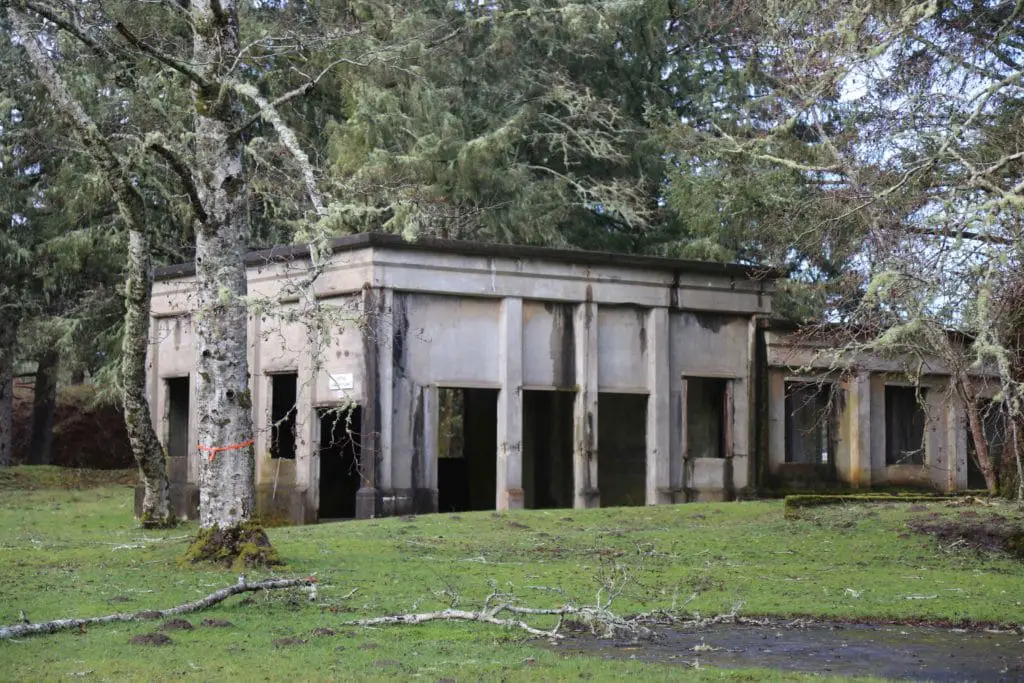
Interwoven with wartime buildings like the communications bunker, are buildings or foundations for the bakery, gymnasium, commissary, and hospital. A little farther back, we came across a large E-shaped building tucked in next to a residential neighborhood.
This building is a dark maze inside, so make sure you have a flashlight before entering. Inside is room after room for storing artillery. This building was one of my favorites, and I would have gladly spent more time inside. We were on our way to leave when we realized the museum had opened. The museum itself cannot compete with the remnants of the fort itself, but we were able to ask questions and see original photos of the fort in action.
A little about Fort Stevens’ History
In 1863, British and Confederate raiders were seen scouting Oregon’s Columbia River. President Lincoln took this as a threat and ordered the creation of Fort Stevens.
At Point Adams, a spit of land that defines the southern-most side of the Columbia River, a nine-sided earthwork fort was created and surrounded by a moat. The rudimentary establishment housed a total of 26 canons, with 17 of them being able to launch 100-plus pound cannon balls well over a mile.
Around the turn of the century, Fort Stevens saw upgrades, such as 8 new concrete batteries, ten-inch rifled canons, six inch rifles, and 12-inch canons. The upgrades came as part of a national effort to better protect coastal defense systems. Fort Stevens was to work together with Fort Canby and Fort Columbia to defend the Columbia River.
Fort Stevens WWII History
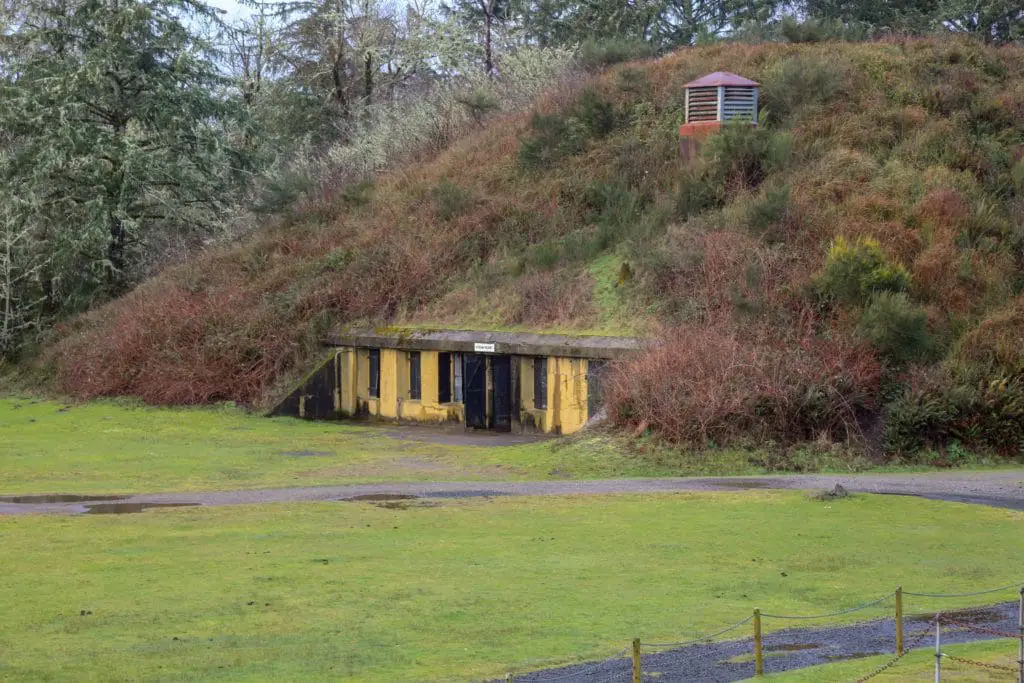
World War II was Fort Steven’s busiest era. Fort Stevens grew massively, with new batteries, new guns, and new buildings to house the 2,500 men stationed there. The only real wartime action Fort Stevens saw, was in 1942 when a Japanese submarine surfaced and fired at the Fort, The attack caused almost no damage, and the Harbor Defense Commander refused to return fire.
It was night and the Japanese did not currently know the location of the Forts along the river. Returning fire would give the Japanese valuable intel as to the location of Fort Stevens. The submarine waited patiently for a response before
retreating.
Fort Stevens State Park in Modern Times
After the war ended, Fort Stevens was decommissioned and the guns were all removed. Technology had changed and the fort was now obsolete. While the Columbia River remains a vital asset to the nation, Fort Stevens’ only role is to remind us of the past and the vital contribution Oregon made to war-time efforts.
Today, Fort Stevens State Park Oregon serves as a wonderful place to reminisce history, and learn. If you are looking for Oregon vacation places to visit, consider adding this often forgotten gem to your list!
Other Trips You May Enjoy



